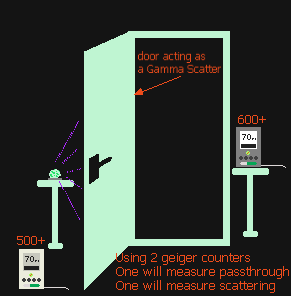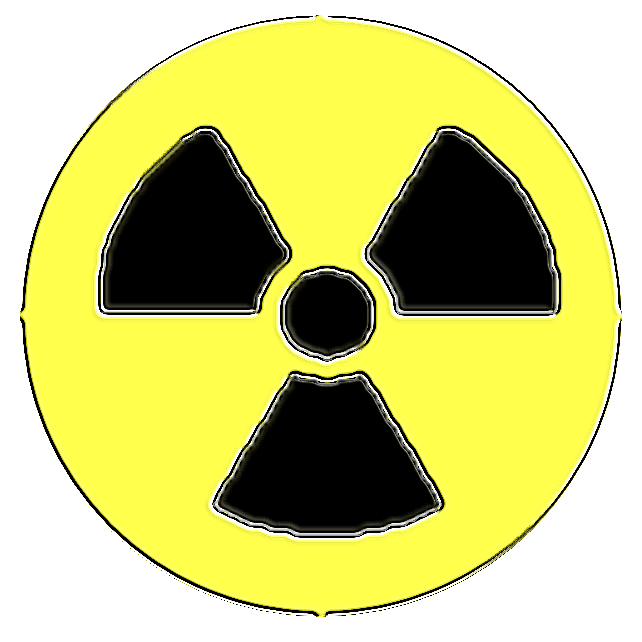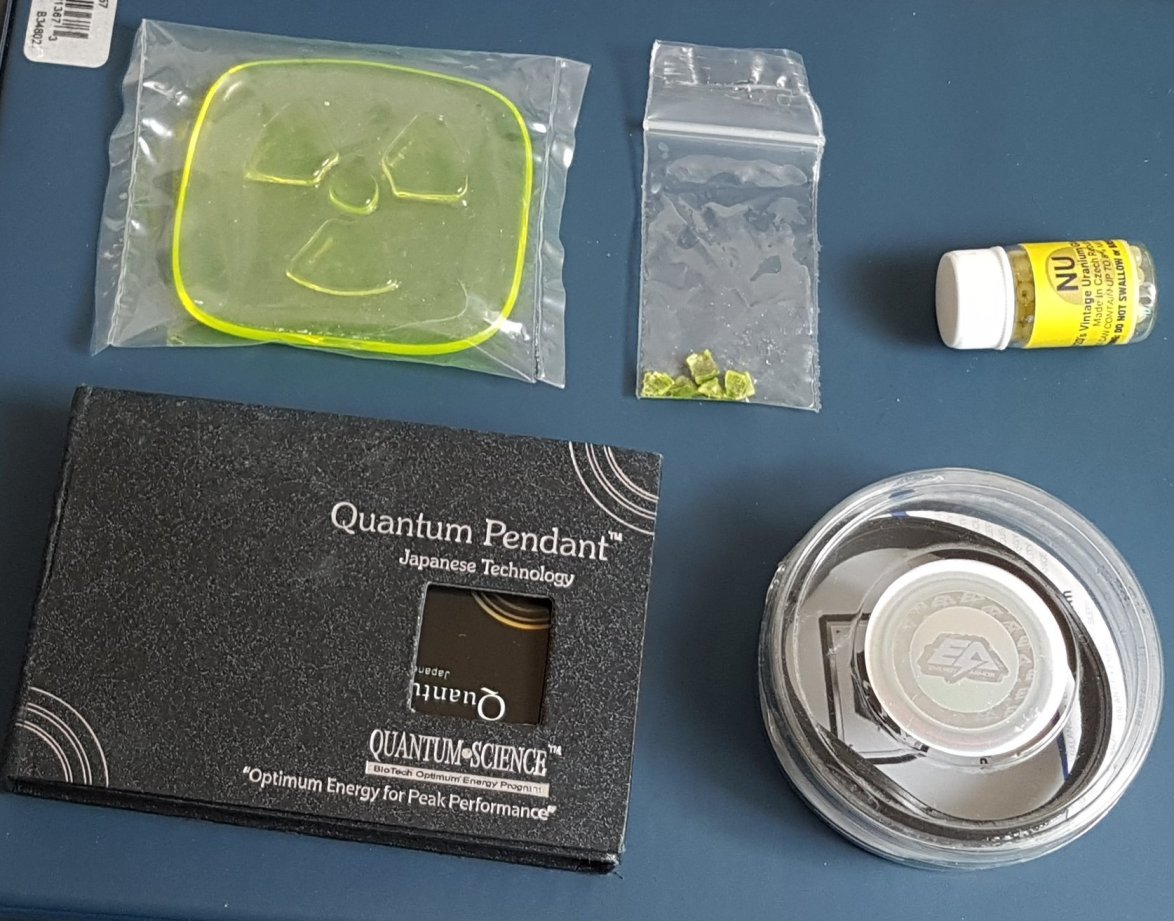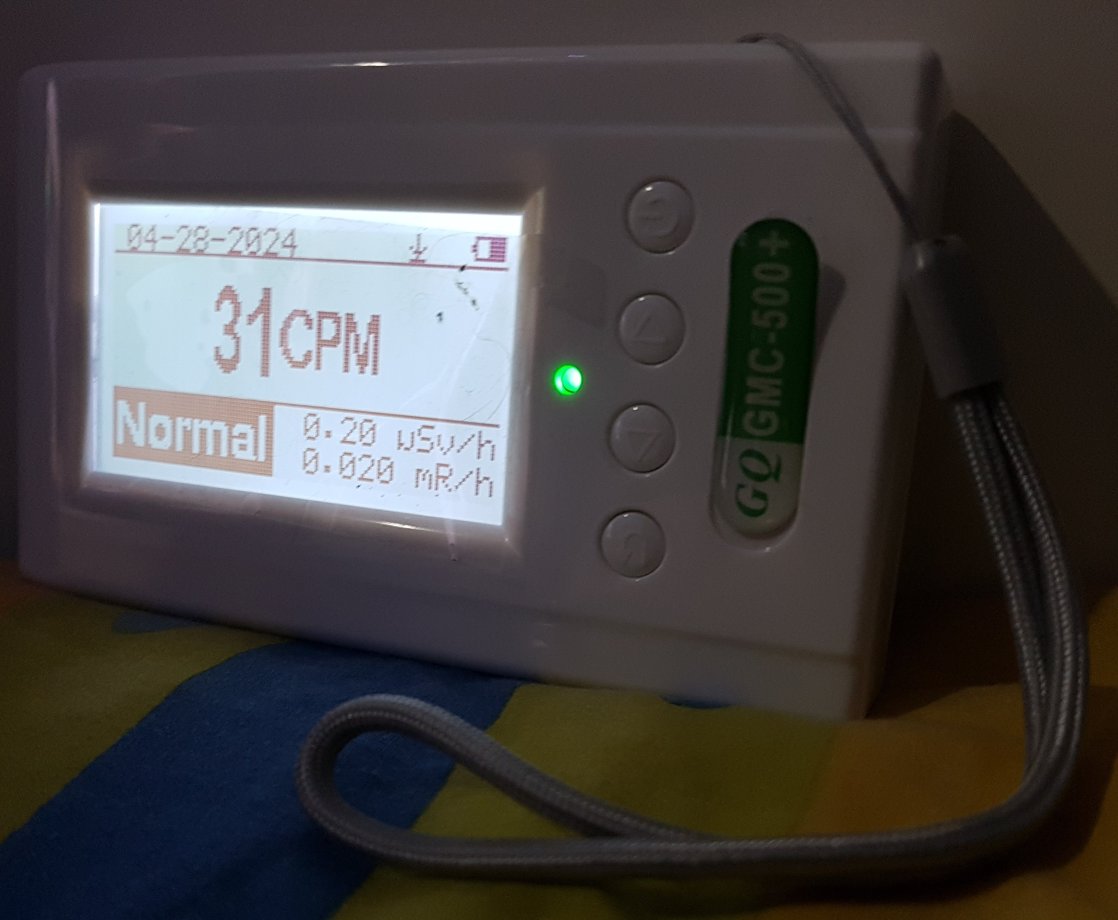Geiger Counters
Essential equipment for measuring ionizing radiation
Table of Contents
A look at Geiger Counters
A short history and popular brands
GQ GMC 600+
Capability: Alpha, Beta, Gamma, X-Ray
Cost: $250-$300
Release Year: 2018
Data Out/Input: Mini-USB type A
Features: Automatic data submission to GMC Map, Wi-Fi capable, direct server connection, alarm on/off, calibration, unit of measurement switching, UI size scaling, display rotation stabilizer, history data saving, timed counter, detailed graph mode, audio jack port
Purchased in August 2021 just five months after buying the 500+, costing £250 plus insured postage.
Users of older GQ GMC models will feel familiar using this one. If you can understand the vague button controls to get into the menu, this one works exactly the same. You just need to mess around with it to get the hang of navigating through the UI. With my 600+, it could be a flaw but it doesn't always power down when long-pressing the power button. I had one incident where the screen ribbon cable popped out of the connector, and that was only caused by the counter falling onto its side. The cable is easy to get back into the connector but reassembling the whole unit is tedious, the wrist strap is horrible to set back in place.
The battery really lasts a long time. I had it on for weeks before it dropped below half way. It's pretty much on all the time now, so I keep it on USB power, but I like to think if my power ever goes out it will remain operational for a while. Unfortunately it is the archaic Mini-USB, known for poor-fitting and easily broken cables. If I could pay to get it upgraded to USB-C, I definitely would.
As for reading sources, it's a fairly sensitive alpha counter. It can detect a piece of uraninite inside a glass case over 60cm away. If you were to use this as a personal dosimeter, however it might not be what you're hoping for. There's no distinction between particles (gamma, beta, alpha) so it's all cumulative and because it's so alpha sensitive with a big pancake window on the back, you're better off going with a 500+ which can't read alpha. It becomes completely saturated when counts hit hundreds of thousands of counts per minute and will start to plateau and go quiet. This happens with a strong alpha source right up close to the pancake sensor, or lots of sources packed together close to the counter. For that reason, the 600+ is not the best for reading high level alpha sources but it certainly does a good job.
GQ GMC 500+
Capability: Beta, Gamma, X-Ray
Cost: $180
Release Year: 2017
Data Out/Input: Mini-USB type A
Features: Automatic data submission to GMC Map, Wi-Fi capable, direct server connection, alarm on/off, calibration, unit of measurement switching, UI size scaling, display rotation stabilizer, history data saving, timed counter, detailed graph mode, audio jack port
Limitations and Uses
What they can do and what they can't
What they can do (and what they can't)
Summed up to their number one function; Geiger counters are made for counting an amount of radioactive particles per minute. They can have more specific configurations, or be limited to just basic number counting. It's expected that the more expensive counter will have a wider range of functions, such as being able to save the recorded data as a line graph. At the highest tier, some counters can even distinguish between radioactive sources.
Price versus accuracy
The price you pay is a clue as to what the internals of your equipment look like. More affordable "hobby-grade" detectors use basic Geiger-Muller tubes, which by technical and scientific equipment standards are a fairly difficult component to source. Only a select few manufacturers will be making Geiger-Muller tubes, hence the prices can reflect a significant portion of the total cost of a geiger counter. Not all G-M tubes are sensitive to alpha radiation, but that does not mean the beta-gamma-only tube counters are useless. We will explain this point a bit further down where we talk about dose rate conversion.
Being highly sensitive equipment, interference can introduce errors in reporting of counts. Better casing insulation is needed to protect the internal sensors from static noise and so it can detect the smallest amounts of ionizing radiation with greater accuracy. Speaking of low grade geiger counters specifically (those baton-shaped ones commonly sold on Aliexpress that plug into a mobile device), they likely do not contain a G-M tube at all, though I would like to get hold of one of these at some point to test this theory! Under or over reporting of radiation count will essentially render a geiger counter as useless, since accurate counting is its main job, and to keep the user same from harm. It's like having a smoke detector that will only sound off if the smoke is blue coloured.
The Dose rate problem
An issue affects not only the cheapest models, but the most expensive ones too. This concerns conversions of Counts per Minute into any dose-relevant measurement per hour. It's not just a hardware issue but also a technical and historical one;
-Differing Standards; the Soviet Union, being a wavemaker in nuclear science, had its own way of measuring radiation doses. Their units of measurement symbolize the interaction of ionizing radiation on a human body
Torbernite #1
Torbernite
Colour: Mint green, emerald green, orange brown, dark brown
Size: 3.5cm
CPM: 3000
Notes: I have two pieces of Torbernite. This is my biggest and heaviest one. The green area is incredibly flaky and I have to be careful not to brush over it. The green flakes sparkle in the light and the brown section looks burnt.
Torbernite #2
Torbernite
Uranocircite #1
Uranocircite
Review: GMC 600+ and GMC 500+
My owned counters
Boltwoodite #1
Boltwoodite
Colour: Pale white, grey, quartz white, pale pink
Size: 3cm
CPM: 300
Notes: The first piece of ore I have ever purchased. I bought this in 2016, but did not get a geiger counter until 2021.
Autunite #1
Autunite
Colour: Bright yellow, green, lime green
Size: (particulate) >5mm
CPM: 4000
Notes: My second ever purchase of ore. This started out as a vibrant green but dry heat has caused it to turn yellow over time.
Uranium Glass #1
Uranium Glass
Colour: Neon green, transparent glass green
Size: 7cm x 4.5cm x 1cm
CPM: 250
A novelty item crafted with reheated and reshaped antique Czech uranium glass from 1950.
Note: CPM stands for Counts per Minute
Test Scenario #1: "It's not just Alpha"
In this experiment, we have our alpha-capable geiger counter on top of a tall piece of furniture, approximately 1 meter away. At this distance, the counter should not be able to detect alpha particles even with nothing between the source material and the geiger counter up high. The pancake sensor (a small circular window at the back of the counter) is facing away from where the sources are going to be placed so it can't "see" them. Four small cubes of uranium blend minerals (torbernite, kasolite, uranocircite and uranophane) are stacked besides the piece of furniture but right below. They are moved slowly to this location, cube by cube. The counter starts with a base level of 35-42 counts per minute (0.1usv). One cube is placed down below. The green led picks up pace and flashes a little bit more actively but the base level is still low at 45-52 counts per minute. After one minute of being left there, the count is steadily 55-65 counts per minute. Then a second cube is placed below the furniture and left for one minute. For reasons unknown, the count actually falls with the second cube, and the green led does not flash as actively. After a further minute, the third cube is placed. The count returns to a base level of between 55-65 counts per minute but with more "quiet" breaks between. At one moment it hits 72 counts per minute but sinks back down again to 53cpm after a few seconds. Again, we see the geiger counter return to a lower base level in the high 40's, but with moments of sudden bursts of activity. The final cube is added to the cluster. It doesn't immediately shoot life into the counter, but around 25 seconds in, it starts to react and the green led flashes hastily, hitting new highs of 84cpm and then sinking to 64cpm, but mostly hovering between the two at 75cpm. There are points where the count dropped all the way down to the base level it had right at the start.
This inconsistent, almost random but actually quite predictable result is indicative of gamma particle bursts. We know that alpha particles cannot pass through the solid plastic cubes the source materials are being held in (I didn't mention the type of material the cubes were made from at the start, but I have reasons), beta particles might be able to escape but then they also have to travel through air for 1meter, and then pass through the bottom-side of some furniture. Now we can imagine ourselves minding our own business, sitting next to a powerful alpha source that is 1 meter away in a sealed container. We might think this is reckless and endangering by being so close, but in reality it's barely even emitting above background levels despite releasing gamma particles.

Reasons for the anomalous drop of counts caused by adding the second cube to the cluster could be due to obscuration (placed in such a way as to alter the path of decay particles emitted from the first cube), or possibly geiger counter inaccuracies or dead-time, though the latter is unlikely at such a low. relatively passive count. Another possibility is also hardware related; data transfer cable. Where the geiger counter is placed, the cable must flex across the surface of the furniture and it's also a much longer cable (2m) so that it can reach. This test was done with the GQ GMC 600+, when time allows I will also replicate the test with the GMC 500+.
Test Scenario #2: "Errant Gamma"
This is a test scenario yet to happen. The plan is to leave exposed a large piece of alpha source material that also produces gamma radiation in small amounts. We want to see the "Compton Scattering" principle in action; this is where gamma radiation is not bounced off a hard surface like a rubber bouncing ball off a glass window, rather diffused, partially absorbed and split into different directions when it comes into contact with a thick, hard surface.

To get a positive Compton Scattering result, we need our second geiger counter's count rate to increase upon closing the door which is acting as a scattering barrier. The first counter, a GMC 600+, is measuring only particles that pass through the wooden door. The second counter, a GMC 500+, is placed directly at the bottom corner of the door as it intersects with the floor while open. It is entirely possible that the wooden door will not be a sufficient material to demonstrate scattering in a measurable amount. Despite this, the test will be carried out to see if we get anything at all, no matter how small.
Radioactive Isotopes and where they come from
Typically, isotopes with a fairly short half-life (the time it takes for half of the elements particles to be lost to decay) and that emit predominantly BETA and GAMMA radiation are the ones that occur as weapons or fuel, and you shouldn't find them in nature (and if you do, that's called an Orphan Source, and that's a whole other issue that might put your life at risk!)
Iodine-131: Accumulates in the human thyroid, causing thyroid cancer. It decays into xenon-131, a stable and non-radioactive element. Half life: 8 days
Cesium-137: Linked to contamination of bovine dairy products and meat at the point of the Chernobyl accident. Spreading on winds, it was even detected in reindeer herds living in Scandinavia. Much like iodine-131 and any other radioactive element, it's prone to biological accumulation and will increase cancer rates anywhere humans or animals come into contact with it. Cesium-137 decays by BETA decay, into barium-137m, which then further decays into a stable form of barium-137 by emitting GAMMA particles. Half life: 30.7~ years
Strontium-90: A heavy BETA emitter of which its secondary product is also hazardous; Yttrium-90. Strontium-90 is a byproduct of nuclear detonation and is often detected by unsuspecting surveyors with geiger counters, which is a clue that either a power plant has suffered a meltdown or nuclear testing is taking place. Strontium-90 is a mimic of Calcium, which the human body mistakes as a useable mineral to aid in teeth and bone repair, but ultimately accumulates as a fatal error. It's also a major contaminant of field crops and water sources. Half life: 28.8~ years
Cobalt-60: A speciality of medicine and scientific research, it emits powerful gamma rays so is a potent core for cancer treatment machines. It's been responsible for many cases of negligent disposals of hospital machines, leading to them being dismantled and the Cobalt-60 capsule inside exposing everyone in the vicinity. It becomes nickel-60 when it decays into a permanent stable element. Half life: 5.27~ years
How to store radioactive items



----------------------------------------------------------------------------------------
My wristbands are kept in their original packaging and stored in the same aluminium lock-box as my ore samples; there's no issue of a runaway reaction happening or another phenomenon called "Bremsstrahlung" which is essentially very fast charged particles colliding with other charged particles, and creating X-Ray radiation as a result of the collision. There are reasons why using a regular consumer-grade metal container is perfectly fine for storing radioactive materials;
- Uranium ore mineral is low grade and predominantly releases alpha radiation.
- Alpha particles cannot pass through surface skin barrier, and can't travel very far through air.
- Even a plastic bag can prevent alpha particles from passing through.
- If being stored loose in the container, fine particles of mineral are unlikely to contaminate the surrounding environment if handled carefully.
- Radon emission can be controlled by keeping samples inside an airtight container, also stored inside a metal box.
It's always best to minimize touching the surface of your mineral samples to prevent particle falling and skin contamination. Alpha particles can't pass skin but accidentally ingesting heavy metal will make you very sick. Some uranium ores produce more Radon gas than others depending on their concentrations of Radium-226, a precursor of Radon; minerals such as Uraninite and Carnotite produce more radon because they contain more concentrated amounts of Uranium which decays into Radium-226, as such these should be kept inside a secondary container that is airtight.
Measuring Radiation: A How-To
If you're looking to get into collecting and hunting for radioactive things, you'll need to get yourself a geiger counter. There's loads of different types available, but you're probably looking for a geiger counter that can detect alpha particles (since all natural isotopes emit this type of radiation as a primary source!). Alpha-capable GMCs are quite expensive, so if you're not willing to spend upwards of £250 on one of these models, you could always stick with one of the entry-tier counters such as the GQ GMC 500 plus, which runs about £120.
My two counters are both the GQ GMC machines; a GMC 500+ and a 600+. The 600+ cost me £250 not including shipping from where they are made in Washington, USA.
Free Mobile Apps? Those are fake!
Not everyone is going to be wise to the fact that every single app for detecting ionizing radiation is completely fake and is randomly pulling data from nowhere. Apps that appear to be counting something genuine are likely to be falsely advertised or misinterpreted; those are Electrical Magnetic detectors and cannot collect any kind of radioactive data whatsoever. It's also debateable if those even work, but I'm not concerned with those apps anyway.
It is possible to record data using a specific instrument designed to attach to a phone, but these devices are extremely overpriced for their much worse reliability and inaccuracy in data reading. You're paying substantially more for the convenience of plugging a usb-fitted tube into your phone so you don't have to carry around a larger unit, but an actual geiger counter will have been calibrated and tested specifically for its purpose. I would argue that a lot of these tube-to-phone devices are also fitted with vastly inferior geiger muller tubes, perhaps even something else entirely. There's a chance for a huge margin of error in your readings- a geiger counter is NOT something you want a huge margin of error on!

A GQ GMC 500+ Geiger Counter



